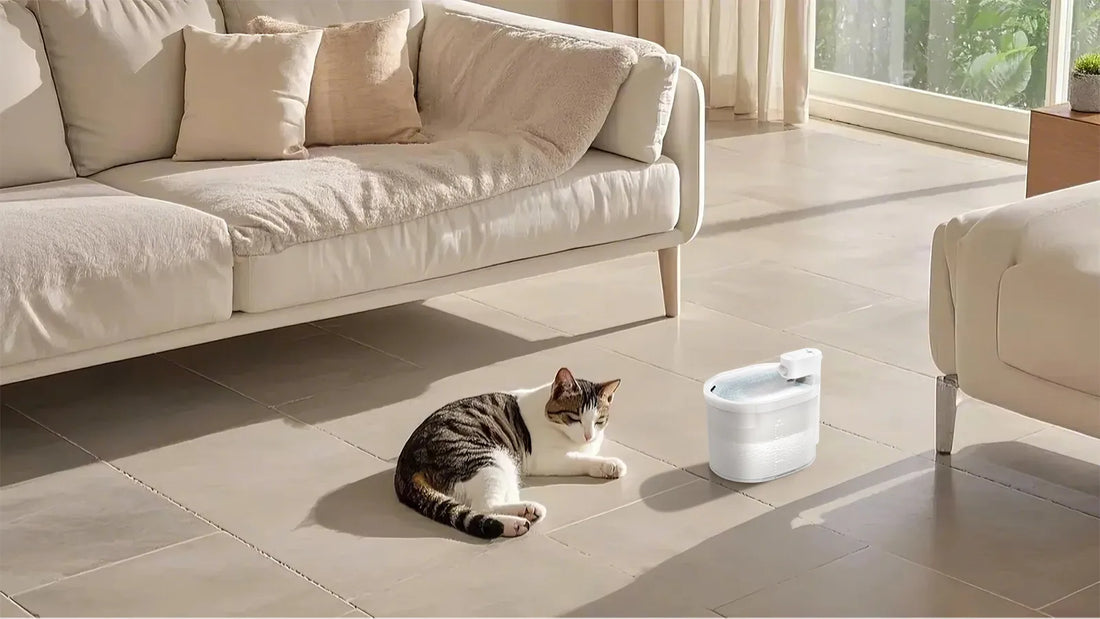If you’ve ever wondered how to get your cat to stop splashing its water bowl, you’re not alone. Many cat owners face this frustrating yet amusing behavior. While it might seem harmless at first, constant splashing can lead to messes, wasted water, and even potential health issues for your feline friend. Understanding why cats do this and implementing the right strategies can help you curb the behavior and maintain a cleaner, happier home.
Why Do Cats Splash Water Bowls?
Before diving into solutions, it’s essential to understand why cats splash water bowls in the first place. Cats are naturally curious and playful creatures, and their behavior often stems from instinct or environmental factors. Here are some common reasons:
- Instinctual Behavior: In the wild, cats may paw at water to check for debris or predators. This instinct can carry over to domestic cats.
- Playfulness: Cats are naturally playful, and splashing water can be a form of entertainment.
- Preference for Moving Water: Many cats prefer running water over still water, as it feels fresher and more appealing.
- Boredom or Stress: A lack of stimulation or anxiety can lead to unusual behaviors like splashing.
- Medical Issues: In some cases, excessive splashing may indicate an underlying health problem, such as dental pain or dehydration.
How to Get Your Cat to Stop Splashing Water Bowls
Now that you understand the potential causes, let’s explore effective strategies to address this behavior. Here are some tried-and-true methods:
1. Use a Heavier or Wider Bowl
Lightweight bowls are easier for cats to tip over or splash. Opt for a heavier, wider bowl that’s harder to move. Ceramic or stainless steel bowls are excellent choices because they’re sturdy and less likely to slide around.
2. Provide a Water Fountain
Since many cats prefer moving water, a water fountain can be a game-changer. These devices circulate water, mimicking a natural stream and reducing the urge to splash. Plus, they encourage hydration, which is essential for your cat’s health.
3. Place the Bowl in a Tray or Mat
To contain spills, place the water bowl on a tray or mat with raised edges. This setup catches splashed water and makes cleanup easier. You can also use a silicone mat to prevent the bowl from sliding.
4. Offer Multiple Water Sources
Sometimes, cats splash water because they’re seeking attention or exploring their environment. Providing multiple water bowls in different locations can reduce boredom and give your cat more options.
5. Address Underlying Stress or Boredom
If your cat is splashing due to stress or boredom, consider enriching its environment. Provide interactive toys, scratching posts, and regular playtime to keep your cat mentally and physically stimulated.
6. Monitor for Medical Issues
If the splashing behavior is sudden or excessive, consult your veterinarian. Dental pain, dehydration, or other health issues could be the root cause, and addressing them promptly is crucial.
7. Train Your Cat with Positive Reinforcement
Training can help modify your cat’s behavior. When your cat drinks without splashing, reward it with treats or praise. Over time, this positive reinforcement can encourage better habits.
8. Experiment with Bowl Placement
The location of the water bowl can influence your cat’s behavior. Try placing it in a quiet, low-traffic area where your cat feels safe and undisturbed.
9. Consider the Bowl’s Shape and Depth
Some cats dislike their whiskers touching the sides of the bowl. Choose a shallow, wide bowl to prevent discomfort and reduce splashing.
10. Be Patient and Consistent
Changing your cat’s behavior takes time and patience. Stay consistent with your approach, and don’t get discouraged if progress is slow. Every cat is unique, and what works for one may not work for another.
Preventing Future Splashing
Once you’ve addressed the immediate issue, take steps to prevent future splashing. Regularly clean the water bowl to ensure it’s fresh and appealing. Monitor your cat’s behavior and adjust your strategies as needed. Remember, a happy and hydrated cat is less likely to engage in disruptive behaviors.
By understanding your cat’s needs and implementing these tips, you can create a more harmonious living environment. Not only will you reduce messes, but you’ll also strengthen the bond with your feline companion. So, if you’re tired of mopping up water and want to keep your cat happy, give these strategies a try—your floors (and your cat) will thank you!













